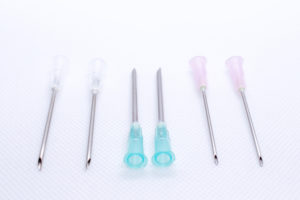Posted on February 14, 2019

Dr. Khouri is also a big name in the fat grafting world (and who I trained with to learn fat grafting to the breast). He was asked to comment on the PRS November 2018 study on the impact of cannula size for fat retention.
His evaluation of the cannula size study:
- Fat survives by oxygen diffusion until new blood vessels form.
- The surface area to volume ratio is therefore critical. Studies indicate this needs to be a graft radius of less than 1.6mm
- He then goes through math equations, and states you are making a cylinder of fat when you inject it.
- The rate of injection is not part of the equation
- The only variable that matters is the volume injected over the distance the cannula is retracted along
- A thin cannula can deliver a large blob if you do not move while the cannula is injected.
- Bottom line: IT IS THE AMOUNT OVER A GIVEN DISTANCE that determines everything.
- HIGHER VOLUME SYRINGES DELIVER HIGHER VOLUMES OF FAT WHEN THE PLUNGER IS PUSHED.
- He thinks the syringe size is the most important thing you can pick.
- It is hard to control syringes over 3cc.
- He advocates 3cc syringes for body fat grafting (breast, buttock) and 1cc syringes for facial grafting. (I use these sizes already)
- FOR OTHER REASONS CHOOSE A SMALL CANNULA
- small cannulas make a smaller channel. ? Does this help the fat engraft better?
- You can use small puncture wounds (I use an 18 gauge needle, so no scar) so you can have multiple entry points. More entry points = more spread out fat = better fat contact with surrounding tissue = better fat retention.
Khouri’s pearls?
- Don’t inject without moving
- No two motions in the same direction
- No more than .1cc/cm of cannula motion
- Smaller syringes, greater precision.
The information provided on this website is for general informational purposes only and does not constitute medical advice, diagnosis, or treatment. Always seek the advice of a qualified healthcare provider for any questions regarding your health or medical condition.
